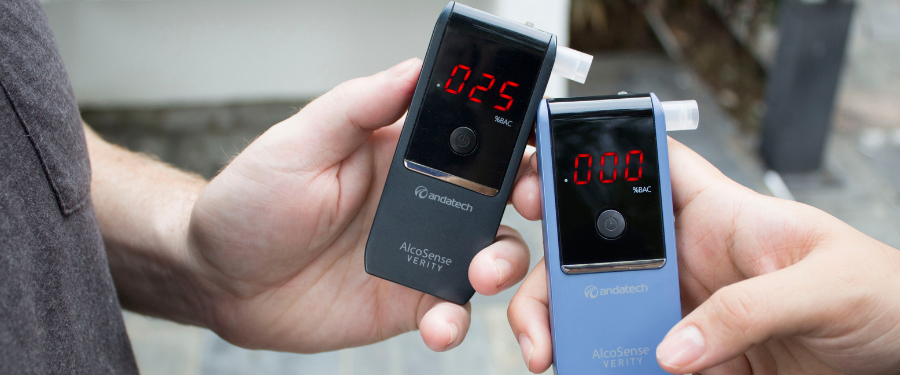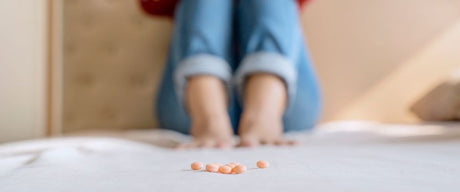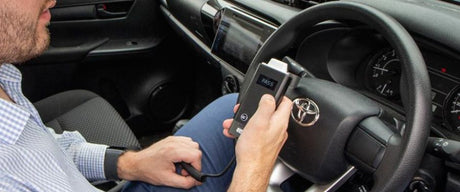If you’re a responsible Australian looking for a way to conveniently and accurately measure your level of impairment after having a few drinks, blowing into a personal breathalyser is the way to go.
With many Australians becoming more concerned with road and personal safety, personal breathalysers are becoming a more common measurement tool in Australian households. With that, it’s essential to know how to use your unit correctly to ensure the most accurate results, help you make informed decisions, avoid any drunk driving offences and, most importantly, keep you safe so you can return home to your loved ones.
Breathalyser dos
Although using a personal breathalyser is as easy as blowing into your unit until a clicking or beeping sound is heard, there are still a few guidelines that need to be followed to ensure your results are accurate and that only your breath alcohol is measured.
Wait at least 20 minutes after eating or drinking
It takes time for alcohol to be absorbed into your bloodstream before being exhaled in the breath. However, the test subject’s breath alcohol will lag behind his/her blood alcohol content. Additionally, consuming food, drinks, and even chewing gum can introduce residual alcohol into your mouth, which can cause a false reading on a breathalyser.
Waiting about 20 minutes after your last drink to take an alcohol breath test will ensure more accurate results.
Use a clean mouthpiece for each test
Unless your breathalyser has a built-in mouthpiece like the AlcoSense Verity personal breathalyser, it’s important to use a clean mouthpiece for each test because used mouthpieces may contain traces of alcohol from previous tests.
Follow manufacturer instructions
Depending on the manufacturer, a breathalyser will have different needs and maintenance tips to prolong the unit’s life which include power supply (i.e. battery type and size, etc.), storage temperature, working temperature and more.
Different breathalysers may also have unique features such as mobile phone pairing, result sharing, internal memory storage and more. By following manufacturer guidelines, you can help ensure your breathalyser operates properly and get accurate results.
Regular calibration
Calibration services are crucial to maintain your unit’s accuracy as constant use of the unit can lead to sensor drift. Different manufacturers would recommend different calibration frequencies. Andatech offers calibration management plans that will remind users when their unit needs calibration so users can avoid long queues and downtime.
Regularly calibrating your AlcoSense breathalyser will extend the unit’s warranty to a lifetime guarantee.
Breathalyser don’ts
Don’t test immediately after drinking
Avoid drinking any alcohol immediately before testing, as it takes time for alcohol to be absorbed into your bloodstream and exhaled through the breath. If you test your breath immediately after having a drink, the alcohol from your breath will not have reached equilibrium with the alcohol in your blood, resulting in a false higher reading.
Don’t share mouthpieces
Although caring for your mates’ safety is good practice, sharing mouthpieces is not recommended for two important reasons:
Hygiene: sharing mouthpieces increases the risk of transmitting diseases. This is especially important in the age of the COVID-19 pandemic.
Accuracy: Sharing a mouthpiece can result in alcohol residue from the previous test subject being blown into the breathalyser sensor. This would result in a false positive reading or a higher reading than what it should be.
Don’t clean using alcohol-based cleaners
Alcohol-based cleaners can damage the unit's sensor and cause it to lose accuracy over time. This can result in artificial high or low readings, which is dangerous if you’re using the breathalyser to determine whether or not you are safe to drive. Instead, clean your breathalyser using a soft cloth or tissue.
Do not blow in smoke or other contaminants into your unit
It’s vital to ensure that ONLY your breath is exhaled into your breathalyser as other contaminants, including food, drinks and even saliva, do not enter the unit as this could cause permanent damage to its sensor. Smoke contains a variety of chemicals and particles that can have detrimental effects on your unit’s sensor.
Responsible drinking saves lives
By following the guidelines above, you’ll enjoy peace of mind knowing that your breath results are accurate, allowing you to make informed decisions.
However, do note that when it comes to driving, there is no safe amount of alcohol that can be consumed because even a little bit of alcohol can cause impairments in one’s motor skills, making a staple task like driving more difficult and could result in serious harm to oneself or innocent civilians.
AlcoSense personal breathalysers use accurate and reliable fuel cell technology to record results and are Australian Standard AS 3547 certified for accuracy. If calibrated regularly, you can extend the warranty of your unit’s life to a lifetime guarantee.





